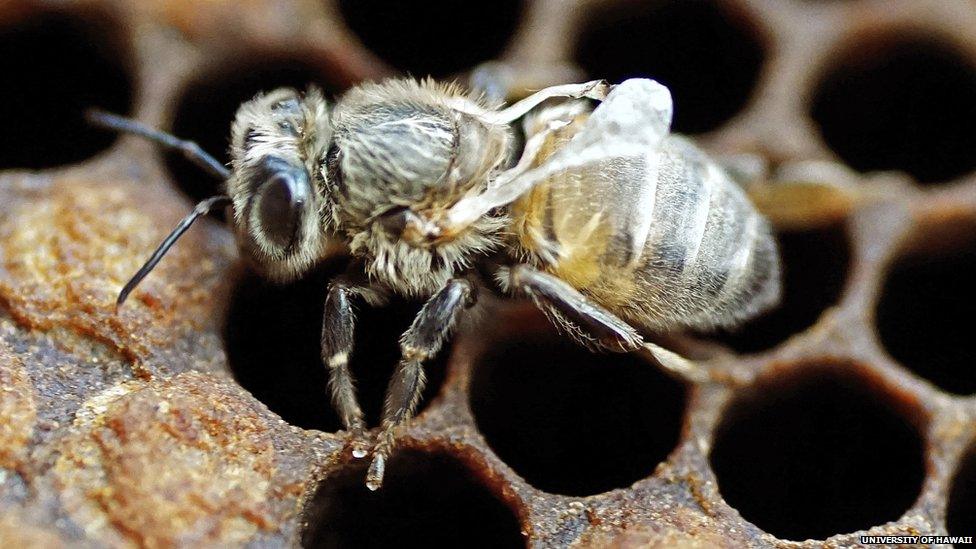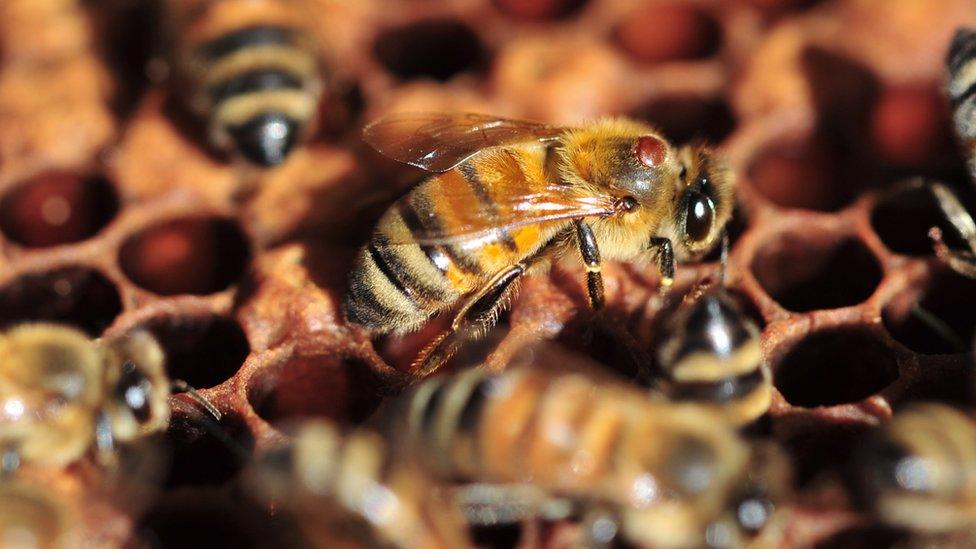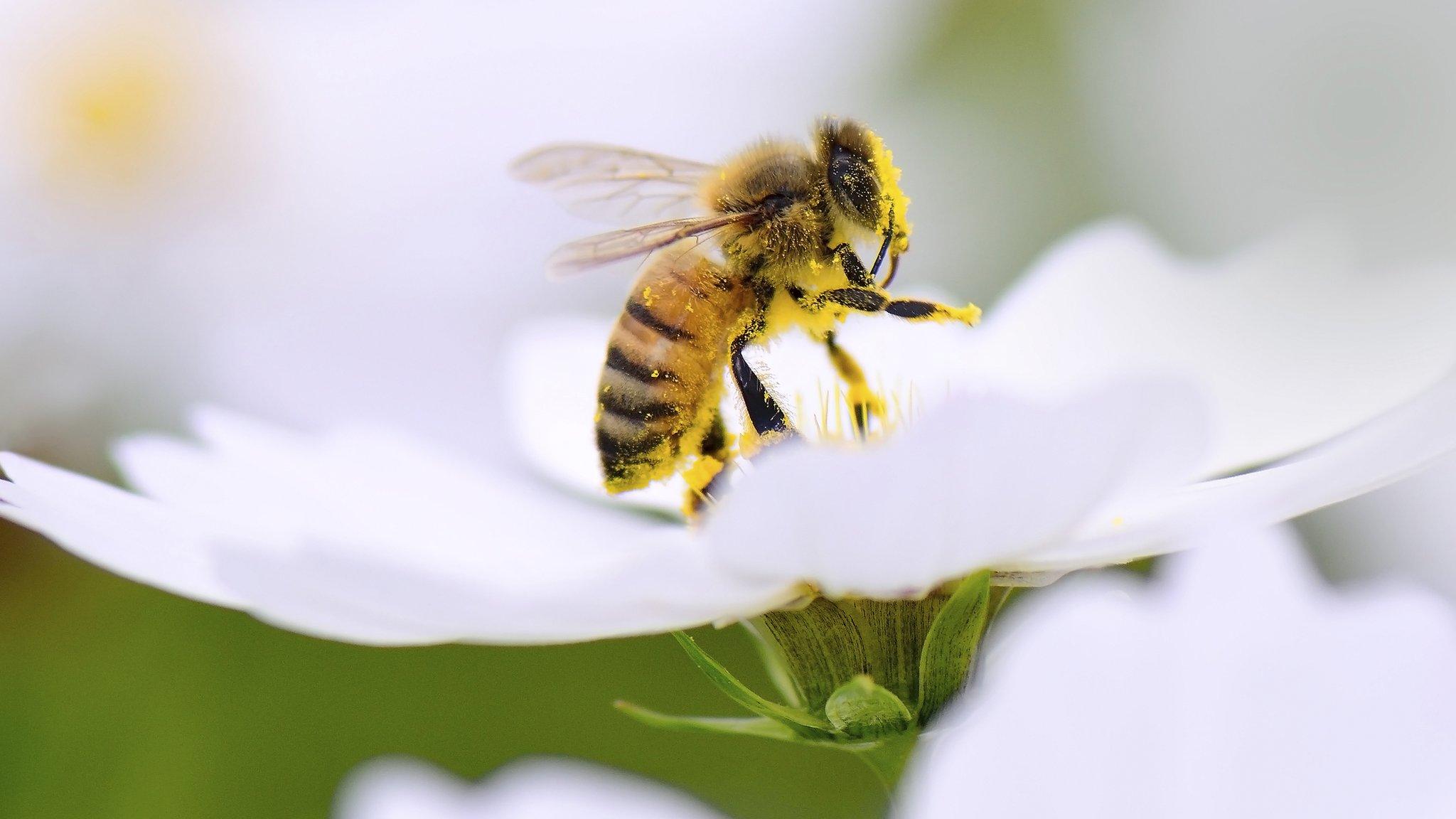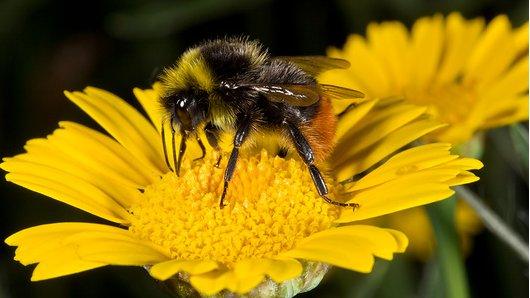Spread of bee disease 'largely manmade'
- Published

Bee infected with the virus
The global trade in bees is driving a pandemic that threatens hives and wild bees, UK scientists say.
A deadly bee disease has spread worldwide through imports of infected honeybees, according to genetic evidence.
Stricter controls are needed to protect bees from other emerging diseases, researchers report in Science, external journal.
The virus together with the Varroa mite can kill-off whole hives, putting bee populations at risk.
Lead researcher Dr Lena Bayer-Wilfert of the University of Exeter said European bees are at the heart of the global spread of what she calls a "double blow" for colonies.
"This is clearly linked to the human movement of honeybee colonies around the globe," she told BBC News.
"It shows a piece of evidence we can't argue with."
'Major threat'
The pattern of the spread shows the movement of the virus around the world is manmade rather than natural, say scientists.

Varroa mites (red spot) on a honeybee
Co-researcher Prof Roger Butlin of the University of Sheffield said Deformed Wing Virus (DWV) was a major threat to honeybee populations across the world with the epidemic "driven by the trade and movement of honeybee colonies".
In the research, scientists at the University of Exeter, Sheffield and Salford tracked the emergence of DWV by analysing genetic samples from honeybees and Varroa mites in 32 locations of 17 countries.
They found that the epidemic largely spread from Europe to North America and countries such as New Zealand, with the European honeybee as the main transmitter.
Prof Stephen Martin of the University of Salford said the combination of the virus and the mite were at the heart of the crash in honeybee populations.
"It supports the idea that DWV is the main cause for the colony losses associated with Varroa and that this comes from European bees," he said.
Scientists believe the combination is particularly deadly because the parasite feeds on bee larvae, while also injecting the deadly virus into the body of grown bees.
The double threat is thought to have wiped out millions of honeybee colonies over recent decades.
Strict limits
The researchers are calling for tighter controls on importing honeybees, such as mandatory health screenings and more checks on movements across borders.
And they say every effort should be made to stop Varroa entering the few areas that are free of the mite to provide a refuge for conservation purposes.
Dr Bayer-Wilfert added: "We must now maintain strict limits on the movement of bees, whether they are known to carry Varroa or not."
Commenting on the study, Prof Mark Brown of Royal Holloway University of London said there were already trade controls in place for honeybees - such as checks by vets - but these were clearly not sufficient.
"We need better regulation if we want to stop this happening in the future for other viruses that are likely to emerge," he said.
The European honeybee is used worldwide for commercial pollination of crops such as nuts and fruit as well as for honey production.
Follow Helen on Twitter, external.
- Published19 January 2015

- Published4 March 2015
